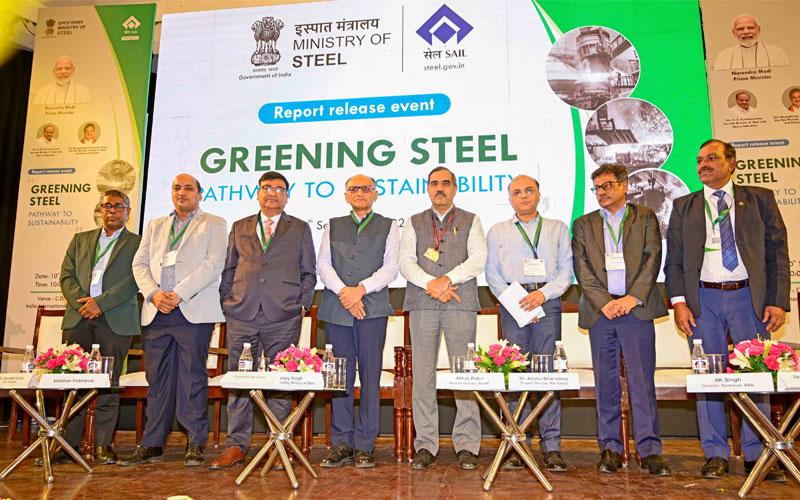The roadmap prepared by the Ministry of Steel aims to push renewable energy use within the steel sector from current 7.2 percent to 43 percent by 2030. The transition process will cost USD 150 billion, apart from USD 13 billion.
Sep 19, 2024

The Ministry of Steel has come up with an action plan to decarbonize one of the country’s most energy-intensive sectors, entailing an investment of USD 283 billion.
Titled ‘Greening the Steel Sector in India: Roadmap and Action Plan,’ the plan talks about critical innovations such as defining “green steel” and leveraging Energy Efficiency Revolving Funds (EERF).
Steel is one of the most crucial elements for the infrastructure and manufacturing sector in India, which at present accounts for a substantial amount of greenhouse gas emissions.
Watch: RR Kabel | Solar Cables | Solar Plant | Renewable Energy
The country is currently one of the top three steel producers of the world. The world looks forward to India playing a pivotal role in the global green transition, which cannot be done without decarbonisation of the steel industry. The Ministry not only aims to make the steel industry greener, but also looks forward to boosting India’s climate commitments, especially under international frameworks like the Paris Agreement.
The ambitious roadmap targets a significant rise in renewable energy use within the steel sector from the current 7.2 percent (as of fiscal year 2021-22) to 43 percent by 2030. This leap will not only require massive investments in cleaner technologies, but also an overhaul of energy supply chains and regulatory support.
The government is looking at options such as tax incentives for manufacturers, particularly luxury automobile producers, so as to encourage them to switch to cleaner steel feedstock. As per officials, such measures can enhance market demand for eco-friendly steel, pushing both large-scale and smaller steel plants to adopt sustainable practices.
Also Read: NLC India Invests INR 50,000 Crore with Aim to Threefold Power Generation Capacity by 2030
The transition process itself is projected to cost an additional USD 150 billion. Smaller steel mills face significant financial hurdles in this shift. It would require an investment of over USD 13 billion to modernize these plants and push them to adopt the best available green technologies.
The Ministry expects collective efforts from the government, industry and financial institutions, to achieve its target.




